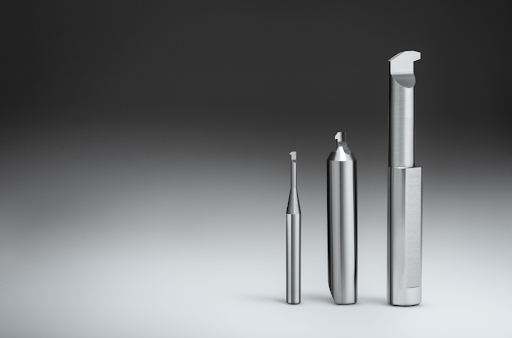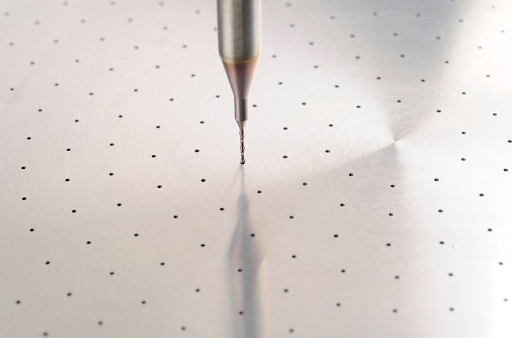Rainford Precision Machines & Machine Tool Partner
A Partnership Built on Expertise and Unmatched Service Support with Rainford’s reputation for technical excellence, leveraging manufacturer-trained...
2 min read
Rainford Precision : Nov 6, 2025 10:44:41 AM

When you choose special cutting tools for a machining application it’s not just the material it’s made from you need to consider but the different grades it comes in. Carbide remains a top choice for machinists because of its exceptional hardness, wear resistance and heat tolerance, making it effective for demanding tasks.
But not all carbide is created equal. The grain size and binder content play an important role in determining performance, tool life and suitability for specific tasks.
So, what are the different carbide cutting tool grades and how do you select the right one for the job?
Carbide tools are a composite of tungsten carbide grains held together with a metallic binder, typically cobalt. The binder plays an essential role in whether a tool prioritises hardness or toughness.
Low binder content makes tools harder but more brittle, ideal for finishing and precision tasks. High binder content improves toughness, perfect for general or roughing applications.
Selecting the right balance depends on both the material being machined and the machining environment.
Fine grain carbides (those with lower cobalt), including ultra-fine and nano-grain grades, offer sharper cutting edges and excellent wear resistance. These qualities make them ideal for precision work, micro-machining, and finishing applications where dimensional accuracy is critical. The smaller, more uniform particles in fine-grain carbides help maintain edge integrity for longer periods, reducing tool wear and ensuring smoother surface finishes.
Fine grain options really come into their own in high-precision sectors such as medical device manufacture or watchmaking where tools can be as small as 10 microns in diameter and production at micro-level is commonplace. Conventional grades simply can’t deliver the uniformity and strength needed at this scale, as larger grains introduce weak points that compromise tool life and accuracy.
Coarser grain carbides, those with higher cobalt contents, prioritise toughness over hardness. These grades are less prone to chipping or fracture under impact, making them a better fit for interrupted cuts, roughing applications, or lower-speed machining.
In operations where tools face unpredictable conditions, such as machining castings with hard inclusions or working with less stable setups, coarse-grain carbides offer the durability needed to withstand shock loads. Though they may not hold a razor-sharp edge as long as fine-grain grades, their ability to absorb energy without failing adds value.
Different workpiece materials place different demands on the cutting tool. Abrasive composites, titanium, hardened steels and exotic alloys often require ultra-fine carbide grades to withstand wear while holding tight tolerances. Conversely, cast iron, bronze, or low-carbon steels may be better served by tougher, coarser grades that can handle fluctuating loads and imperfections in the material.
While the right carbide material grade is a very important factor it can’t be considered in isolation from other aspects such as the coating and geometry. For example, a high-performance micro drill may pair a nano-grain carbide body with a low-friction, heat-resistant PVD coating, improving chip evacuation, reducing heat and extending tool life.
With the right combination of all the factors – tool size, grain, binder content, purpose, coating and geometry you get both longer-lasting tools and consistent performance.
Looking to optimise tool life and achieve superior accuracy in your applications? Speak to our experts today to find out which carbide grades deliver the best results for your machining challenges!

A Partnership Built on Expertise and Unmatched Service Support with Rainford’s reputation for technical excellence, leveraging manufacturer-trained...

Satellite manufacturing isn’t for the faint hearted – not only does it require pinpoint level accuracy, but components need high-performance thermal...

Medical manufacturing is meticulous in its detail, taking years of research and development for products to reach market. The types of equipment that...